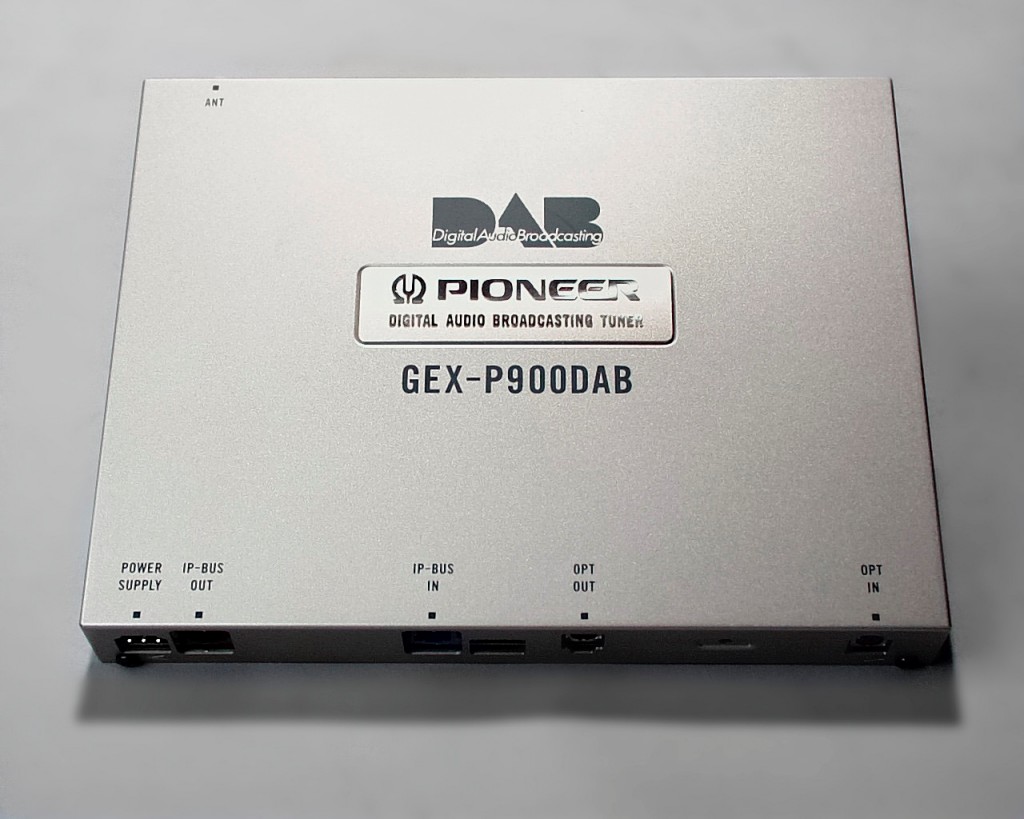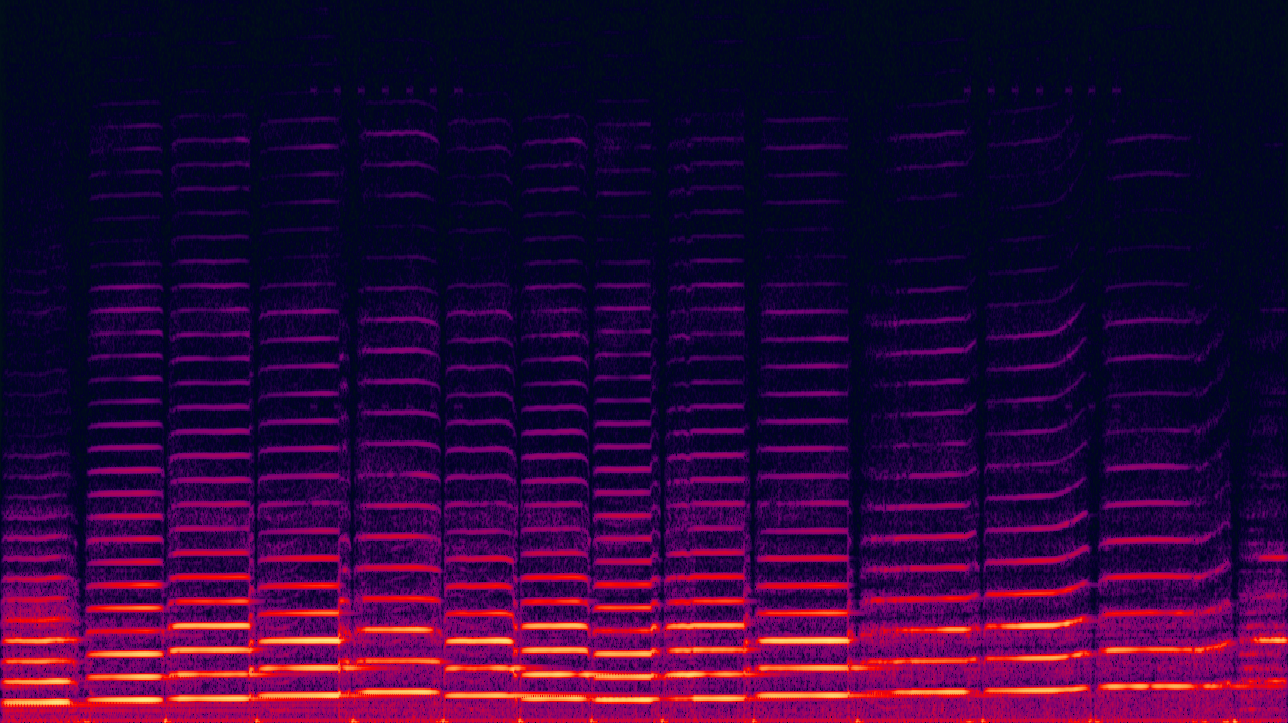|
HE-AAC
High-Efficiency Advanced Audio Coding (HE-AAC) is an audio coding format for lossy data compression of digital audio as part of the MPEG-4 standards. It is an extension of Low Complexity AAC (AAC-LC) optimized for low- bitrate applications such as streaming audio. The usage profile HE-AAC v1 uses spectral band replication (SBR) to enhance the modified discrete cosine transform (MDCT) compression efficiency in the frequency domain. The usage profile HE-AAC v2 couples SBR with Parametric Stereo (PS) to further enhance the compression efficiency of stereo signals. HE-AAC is defined as an MPEG-4 Audio profile in ISO/ IEC 14496–3. HE-AAC is used in digital radio standards like HD Radio, DAB+ and Digital Radio Mondiale. History The progenitor of HE-AAC was developed by Coding Technologies by combining MPEG-2 AAC-LC with a proprietary mechanism for spectral band replication (SBR), to be used by XM Radio for their satellite radio service. Subsequently, Coding Te ... [...More Info...] [...Related Items...] OR: [Wikipedia] [Google] [Baidu] |
HE-AAC And HE-AAC V2
High-Efficiency Advanced Audio Coding (HE-AAC) is an audio coding format for lossy data compression of digital audio as part of the MPEG-4 standards. It is an extension of Low Complexity AAC (AAC-LC) optimized for low-bitrate applications such as streaming audio. The usage profile HE-AAC v1 uses spectral band replication (SBR) to enhance the modified discrete cosine transform (MDCT) compression efficiency in the frequency domain. The usage profile HE-AAC v2 couples SBR with Parametric Stereo (PS) to further enhance the compression efficiency of stereo signals. HE-AAC is defined as an MPEG-4 Audio profile in ISO/IEC 14496–3. HE-AAC is used in digital radio standards like HD Radio, DAB+ and Digital Radio Mondiale. History The progenitor of HE-AAC was developed by Coding Technologies by combining MPEG-2 AAC-LC with a proprietary mechanism for spectral band replication (SBR), to be used by XM Radio for their satellite radio service. Subsequently, Coding Technologies sub ... [...More Info...] [...Related Items...] OR: [Wikipedia] [Google] [Baidu] |
Advanced Audio Coding
Advanced Audio Coding (AAC) is an audio coding standard for lossy digital audio compression. It was developed by Dolby, AT&T, Fraunhofer and Sony, originally as part of the MPEG-2 specification but later improved under MPEG-4.ISO (2006ISO/IEC 13818-7:2006 – Information technology — Generic coding of moving pictures and associated audio information — Part 7: Advanced Audio Coding (AAC), Retrieved on 2009-08-06ISO (2006, Retrieved on 2009-08-06 AAC was designed to be the successor of the MP3 format (MPEG-2 Audio Layer III) and generally achieves higher sound quality than MP3 at the same bit rate. AAC encoded audio files are typically packaged in an MP4 container most commonly using the filename extension .m4a. The basic profile of AAC (both MPEG-4 and MPEG-2) is called AAC-LC (''Low Complexity''). It is widely supported in the industry and has been adopted as the default or standard audio format on products including Apple's iTunes Store, Nintendo's Wii, DSi and ... [...More Info...] [...Related Items...] OR: [Wikipedia] [Google] [Baidu] |
MPEG-4 Part 3
MPEG-4 Part 3 or MPEG-4 Audio (formally ISO/ IEC 14496-3) is the third part of the ISO/ IEC MPEG-4 international standard developed by Moving Picture Experts Group. It specifies audio coding methods. The first version of ISO/IEC 14496-3 was published in 1999. The MPEG-4 Part 3 consists of a variety of audio coding technologies – from lossy speech coding ( HVXC, CELP), general audio coding ( AAC, TwinVQ, BSAC), lossless audio compression (MPEG-4 SLS, Audio Lossless Coding, MPEG-4 DST), a Text-To-Speech Interface (TTSI), Structured Audio (using SAOL, SASL, MIDI) and many additional audio synthesis and coding techniques. MPEG-4 Audio does not target a single application such as real-time telephony or high-quality audio compression. It applies to every application which requires the use of advanced sound compression, synthesis, manipulation, or playback. MPEG-4 Audio is a new type of audio standard that integrates numerous different types of audio coding: natural sound and s ... [...More Info...] [...Related Items...] OR: [Wikipedia] [Google] [Baidu] |
Digital Radio Mondiale
Digital Radio Mondiale (DRM; ''mondiale'' being Italian and French for "worldwide") is a set of digital audio broadcasting technologies designed to work over the bands currently used for analogue radio broadcasting including AM broadcasting—particularly shortwave—and FM broadcasting. DRM is more spectrally efficient than AM and FM, allowing more stations, at higher quality, into a given amount of bandwidth, using xHE-AAC audio coding format. Various other MPEG-4 codecs and Opus are also compatible, but the standard now specifies xHE-AAC. Digital Radio Mondiale is also the name of the international non-profit consortium that has designed the platform and is now promoting its introduction. Radio France Internationale, TéléDiffusion de France, BBC World Service, Deutsche Welle, Voice of America, Telefunken (now Transradio) and Thomcast (now Ampegon) took part at the formation of the DRM consortium. The principle of DRM is that bandwidth is the limiting factor, and ... [...More Info...] [...Related Items...] OR: [Wikipedia] [Google] [Baidu] |
Digital Audio Broadcasting
Digital Audio Broadcasting (DAB) is a digital radio international standard, standard for broadcasting digital audio radio services in many countries around the world, defined, supported, marketed and promoted by the WorldDAB organisation. The standard is dominant in Europe and is also used in Australia, and in parts of Africa and as of 2025, countries using DAB/DMB, 55 countries are actively running DAB broadcasts as an alternative platform to analogue FM. DAB was the result of a European research project and first publicly rolled out in 1995, with consumer-grade DAB Radio receiver, receivers appearing at the start of this millennium. Initially it was expected in many countries that existing FM broadcasting, FM services would switch over to DAB, although the take-up of DAB has been much slower than expected. In 2023, Norway became the first country to have implemented a national FM radio switch-off, with others to follow in the next years, Switzerland and the United Kingdom ... [...More Info...] [...Related Items...] OR: [Wikipedia] [Google] [Baidu] |
Spectral Band Replication
Spectral band replication (SBR) is a technology to enhance audio or speech codecs, especially at low bit rates and is based on harmonic redundancy in the frequency domain. It can be combined with any Audio compression (data), audio compression codec: the codec itself transmits the lower and midfrequencies of the spectrum, while SBR replicates higher frequency content by transposing up harmonics from the lower and midfrequencies at the decoder. Some guidance information for reconstruction of the high-frequency spectral envelope is transmitted as side information. When needed, it also reconstructs or adaptively mixes in noise-like information in selected frequency bands in order to faithfully replicate signals that originally contained no or fewer tonal components. The SBR idea is based on the principle that the psychoacoustic part of the human brain tends to analyse higher frequencies with less accuracy; thus harmonic phenomena associated with the spectral band replication process ... [...More Info...] [...Related Items...] OR: [Wikipedia] [Google] [Baidu] |
HD Radio
HD Radio (HDR) is a trademark for in-band on-channel (IBOC) digital radio broadcast technology. HD radio generally simulcast, simulcasts an existing analog radio station in digital format with less noise and with additional text information. HD Radio is used primarily by FM broadcasting, FM radio stations in the United States, U.S. Virgin Islands, Canada, Mexico and the Philippines, with a few implementations outside North America. HD Radio transmits the digital signals in unused portions of the same band as the analog AM and FM signals. As a result, radios are more easily designed to pick up both signals, which is why the HD in HD Radio is sometimes referred to stand for "hybrid digital", not "high definition". Officially, HD is not intended to stand for any term in HD Radio, it is simply part of iBiquity's trademark, and does not have any meaning on its own. HD Radios tune into the station's analog signal first and then look for a digital signal. The European DRM system shares c ... [...More Info...] [...Related Items...] OR: [Wikipedia] [Google] [Baidu] |
3GP And 3G2
3GP (3GPP file format) is a digital multimedia container format defined by the Third Generation Partnership Project (3GPP) for 3G UMTS multimedia services, largely based on MPEG-4 Part 12. A 3GP container may consist of H.263 or H.264 video codecs or AMR or AAC-LC audio codecs. 3G2 (3GPP2 file format) is a multimedia container format defined by the 3GPP2 for 3G CDMA2000 multimedia services. It is very similar to the 3GP file format but consumes less space and bandwidth, and has some extensions and limitations in comparison to 3GP. Specifications 3GP is defined in the ETSI 3GPP technical specification.ETSI 3GP3GPP TS 26.244; Transparent end-to-end packet switched streaming service (PSS); 3GPP file format (3GP)Retrieved on 2009-06-02. 3GP is a required file format for video and associated speech/audio media types and timed text in ETSI 3GPP technical specifications for IP Multimedia Subsystem (IMS), Multimedia Messaging Service (MMS), Multimedia Broadcast/Multicast ... [...More Info...] [...Related Items...] OR: [Wikipedia] [Google] [Baidu] |
Mp3PRO
mp3PRO is an unmaintained proprietary audio compression codec that combines the MP3 audio format with the spectral band replication (SBR) compression method. At the time it was developed it could reduce the size of a stereo MP3 by as much as 50% while maintaining the same relative quality. This works, fundamentally, by discarding the higher half of the frequency range and algorithmically replicating that information while decoding. The technology behind SBR was developed by the former Swedish company Coding Technologies AB (acquired by Dolby Laboratories in 2007) in the late 1990s. It was included in their MPEG-2 AAC derived codec aacPlus, which would later be standardized as MPEG-4 HE-AAC. Thomson Multimedia (now Technicolor SA) licensed the technology and used it to extend the MP3 format, for which they held patents, hoping to also extend its profitable lifetime. This was released as mp3PRO in 2001. It was originally claimed that mp3PRO files were compatible with existing MP3 ... [...More Info...] [...Related Items...] OR: [Wikipedia] [Google] [Baidu] |
XM Radio
XM Satellite Radio Holdings Inc. (XM) was one of the three satellite radio ( SDARS) and online radio services in the United States and Canada, operated by Sirius XM Holdings. It provided pay-for-service radio, analogous to subscription cable television. Its service included 73 different music channels, 39 news, sports, talk and entertainment channels, 21 regional traffic and weather channels, and 23 play-by-play sports channels. XM channels were identified by Arbitron with the label "XM" (e.g., "XM32" for " The Bridge"). The company had its origins in the 1988 formation of the American Mobile Satellite Corporation (AMSC), a consortium of several organizations originally dedicated to satellite broadcasting of telephone, fax, and data signals. In 1992, AMSC established a unit called the American Mobile Radio Corporation dedicated to developing a satellite-based digital radio service; this was spun off as XM Satellite Radio Holdings, Inc. in 1999. The satellite service officially ... [...More Info...] [...Related Items...] OR: [Wikipedia] [Google] [Baidu] |
Coding Technologies
Coding Technologies AB was a Swedish technology company that pioneered the use of spectral band replication in Advanced Audio Coding. It is a major provider of audio compression technologies for digital broadcasting. Background The company was founded in Stockholm, Sweden, in 1997 by Lars Liljeryd. A German subsidiary was formed in 2000 as Coding Technologies GmbH (later renamed Dolby Germany GmbH) with support from the research organization Fraunhofer IIS. The company also had offices in the United States and China. Coding Technologies was acquired by Dolby Laboratories in 2007 for $250 million in cash. Since then it was renamed to ''Dolby International AB''. Technologies Coding Technologies’ MPEG-2 AAC-derived codec, called aacPlus, was published in 2001 and submitted to the MPEG for standardization. The codec would become the MPEG-4 High-Efficiency AAC (HE-AAC) profile in 2003. XM Satellite Radio used aacPlus for its streams. aacPlus with Parametric stereo, called ... [...More Info...] [...Related Items...] OR: [Wikipedia] [Google] [Baidu] |

